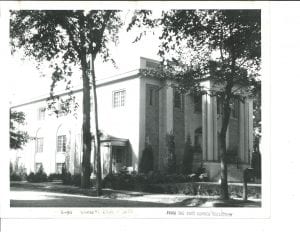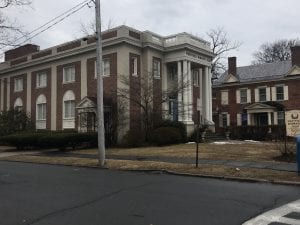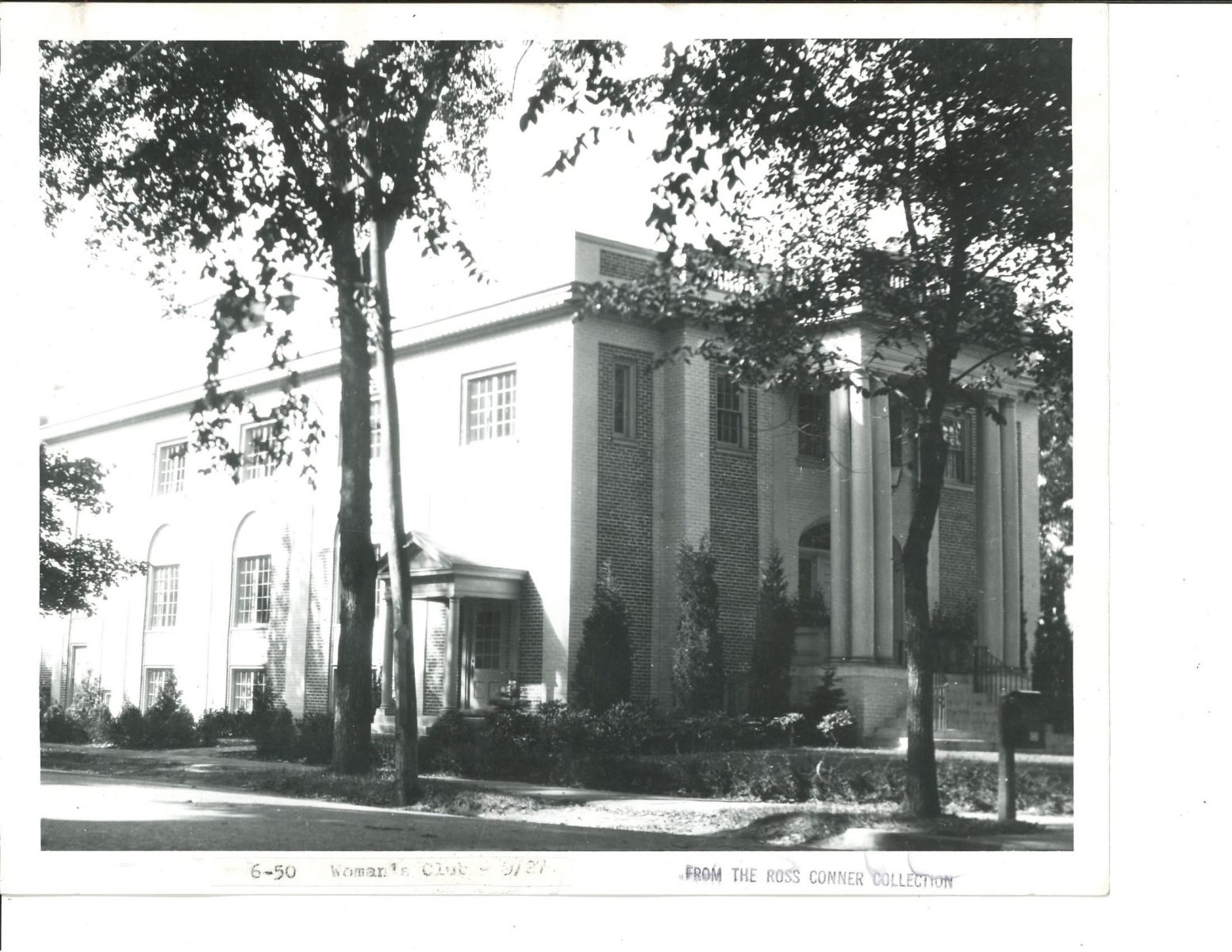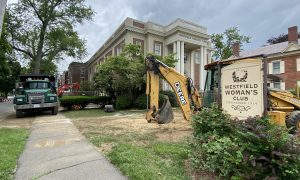
The Westfield Woman’s Club is seen in this photo taken in September 1927. (Photo courtesy of the Westfield Athenaeum)
Alyssa Mathieson, intern, WSU ’20
Almost everyone has heard of a “Gentlemen’s Club” before, but what about a Women’s Club? At the turn of the 19th Century, women’s clubs began to take form. Many of these clubs, including the Westfield Woman’s Club in Westfield, Massachusetts, served as a safe space for women to learn and work alongside other women. These clubs were, and still are, a place for women to simply get out of the house and socialize with each other. The Westfield Woman’s Club allows women to take part in many different activities that benefit them as well as their community.
The Westfield Woman’s Club, organized in 1914, originally held meetings in the homes of various club members or at rented locations throughout Westfield. After a decade of not having a space of their own, their dream clubhouse was built and opened in 1926. The construction of the building was made possible by generous donations from two members, Mrs. Lucy Gillett and Mrs. Fred Parker. They provided a collective total of $20,000 while smaller donations came from other club members and businesses in Westfield. Once completed, the building was worth $45,000. The Westfield Woman’s Club is a three story clubhouse that has many useful features, but the most popular is the auditorium which sits approximately 250, including the balcony with seating of about 100. The building is not exclusively for the Woman’s Club, despite the sign on the front of the building that showcases in all caps, “WESTFIELD WOMAN’S CLUB.” The club rents the extensive space to the public if needed. Rental fees vary, depending on which part of the building is being rented.

Not much has changed to the exterior of the Westfield Woman’s Club, as seen by this image taken in March 2019. (Photo by Alyssa Mathieson)
The Westfield Woman’s Club is just one example of a club that emerged from the Woman’s Club Movement. Many of these women’s clubs had specific purposes. For example, the Chicago Women’s Club focused on improving the quality of the public school system in the city when it first began. Many early women’s clubs were also started by and for women of color to campaign and fight for civil rights in the United States. The Women’s Club Movement worked alongside the Women’s Suffrage Movement in the late nineteenth century and into the early twentieth century. Although women’s clubs were not intended to be political groups, they came to be as a result of fighting against the unfair treatment of women.
The Westfield Woman’s Club has not changed over the years, but the dynamic and culture of it has changed and adapted to the rapidly changing times. It seems to be more casual as women no longer need to show up dressed to the nines and can hold casual conversations. The club still values helping their community. In recent years, the Westfield Woman’s Club has designed and made quilts for women and children at the city’s Women’s Shelter and for the veterans home in Leeds, Massachusetts. The Westfield Woman’s Club encourages women of all ages to join their club located at 28 Court Street, Westfield, Massachusetts, for a low annual fee of $45.




